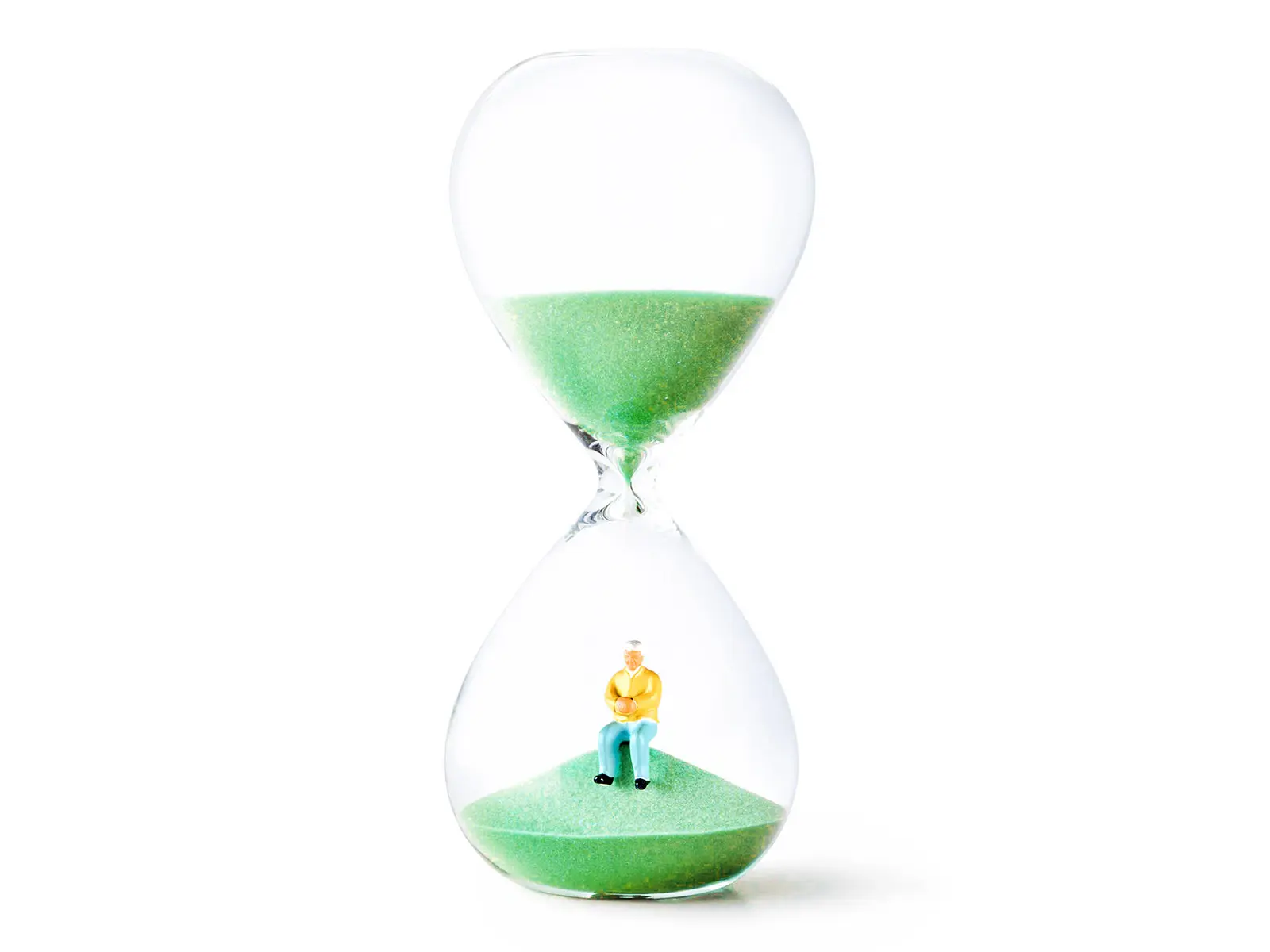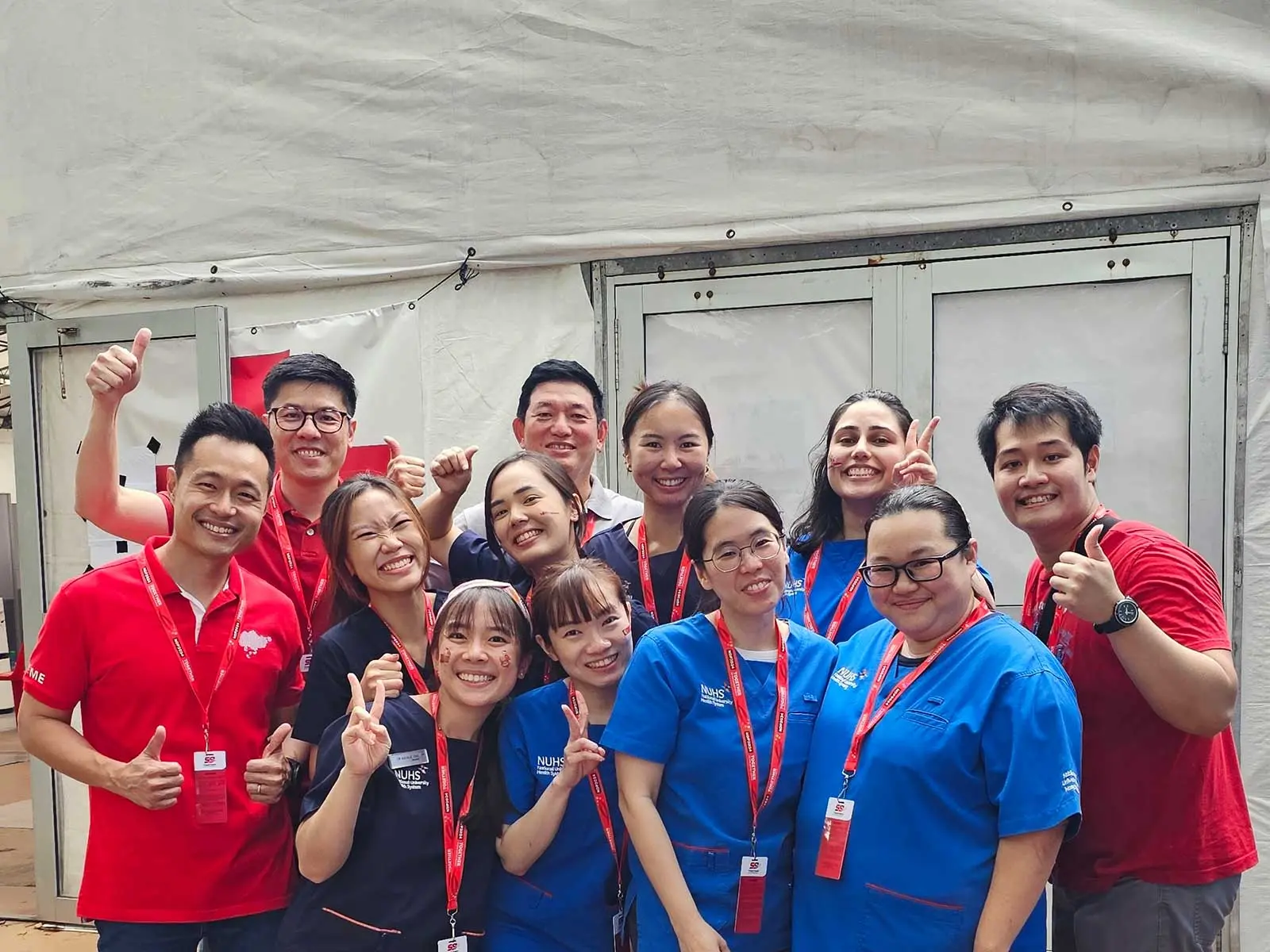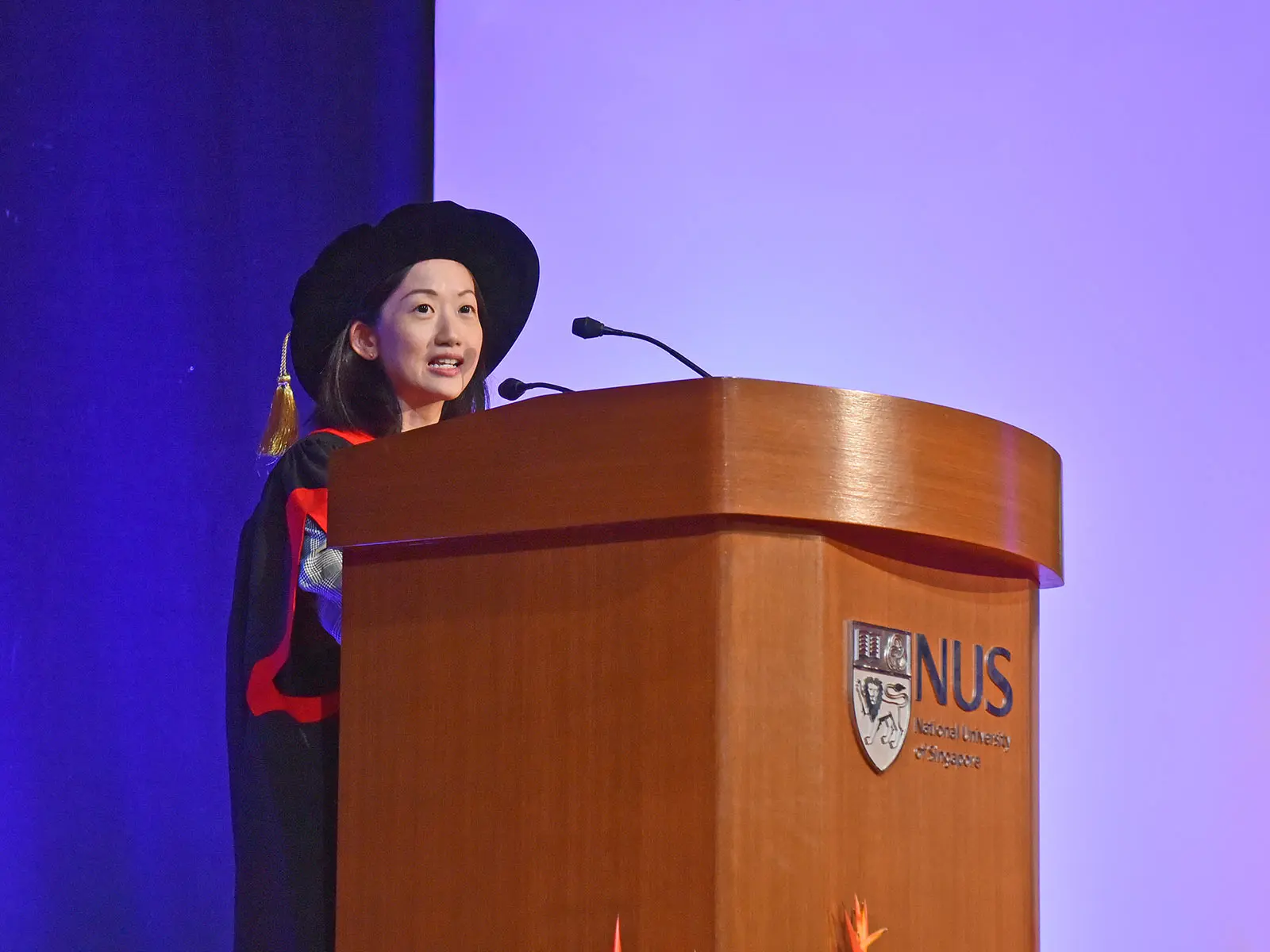
Issue 52
Nov 2024
SCIENCE OF LIFE

A few tubes of blood, a urine test and a health questionnaire to determine a person’s biological age are all that is needed to indicate one’s future risk of mortality.
Anew class of clinical ageing clocks using these tests has emerged. PCAge and LinAge outline the healthy and unhealthy ageing trajectories and provide a new way to test ageing intervention strategies.
Clinical ageing clocks are tools or biomarkers that assess various physiological and molecular parameters to estimate a person’s biological age, as opposed to his or her chronological age. This new class of clinical ageing clocks—developed by Associate Professor Jan Gruber from the Healthy Longevity Translational Research Programme at the Yong Loo Lin School of Medicine, National University of Singapore (NUS Medicine) and Dr Fong Sheng from the Department of Geriatric Medicine at Singapore General Hospital (SGH)—goes one step further in helping researchers to tailor longevity interventions, bypassing exorbitant longitudinal studies to test the efficacy of longevity drugs or supplements.
Birth of PCAge: Predictor of future ageing trajectories
As an algorithm that leverages machine learning, PCAge takes advantage of an analytical matrix factorisation technique that can reduce complex high-dimensional data into lower dimensions. This approach generates a more informative representation of a patient’s status, providing clues to identify the underlying cause(s) of co-morbidities and can inform the type of interventions that will be most efficacious.
The team used publicly available data from the National Health and Nutrition Examination Survey (NHANES), which is one of the largest health and nutrition study in the US, comprising more than 3,000 participants aged between 40 to 89 years. The researchers constructed their ageing clock, PCAge, using this historical data and went on to test its performance in several separate cohorts of patients.
They found that, based on data from a single survey timepoint, often decades before death, PCAge showed significant predictive efficacy over 20 years and across a wide range of ages, illustrating its power in characterising individual future ageing trajectories. Informative predictions could be made in this way well before the onset of any specific pathology. Furthermore, PCAge outperformed a well-known clinical risk marker, the atherosclerosis cardiovascular disease score, which is a metric used by doctors to predict the 10-year risk of cardiovascular disease or stroke, in predicting survival.
Using LinAge, we now have a way to measure a person’s biological age from their clinical biochemistry. We can now distinguish their ageing trajectories early and customise specific interventions that would improve longevity and lifestyle biomarkers, which differs from one individual to the next.”
An evolution: A streamlined iteration of PCAge
Based directly on PCAge, the team generated LinAge, a streamlined clinical ageing clock that maintains equivalent predictive power but requires substantially fewer parameters. LinAge can be determined from routine clinical blood tests, a urine test, and a health questionnaire.
To date, LinAge has been applied to over 60 Singaporeans, aged 65 to 95, in SGH’s geriatric clinic. Among these Singaporeans, several of the patients who participated were found to have previously undiagnosed medical conditions detrimental to their healthy longevity. This enabled the participants to start on the appropriate medication and be referred to relevant sub-specialties for further clinical management required earlier.

A/Prof Jan Gruber (left) and Dr Fong Sheng (right).
These developments support the insight that a person’s chronological or calendar age is less useful in determining how long that person will survive and remain in good health than their actual biological age. It is known that different individuals age differently and the biological age in most people differs from their chronological age. However, a current predicament in the field of healthy longevity is the lack of reliable ways to measure a person’s biological age. Said A/Prof Gruber, “There are dozens of ageing clocks currently being developed, yet they do not agree on meaningful insights into the status of one’s health, including when a person is likely to develop disease or die, which is the crux of healthy ageing.”
The future: Extending life and health with clinical ageing clocks
Regarding future directions, A/Prof Gruber who is also from NUS Medicine’s Department of Biochemistry said, “The team is looking at repurposing existing prescription drugs to extend lifespan and health span. Using LinAge, we now have a way to measure a person’s biological age from their clinical biochemistry. We can now distinguish their ageing trajectories early and customise specific interventions that would improve longevity and lifestyle biomarkers, which differs from one individual to the next.”
Dr Fong Sheng from SGH added, “Work is ongoing to validate LinAge in various populations, including Singapore. Further improvements to LinAge are also currently underway. We hope that our approach to clinical ageing clocks will push the knowledge frontiers of healthy ageing and contribute solutions to add as many healthy years as possible to our rapidly ageing populations.”
The paper is published in Nature Aging, titled “Principal component-based clinical aging clocks identify signatures of healthy aging and targets for clinical intervention”.
Click here to read the full paper.
More from this issue



